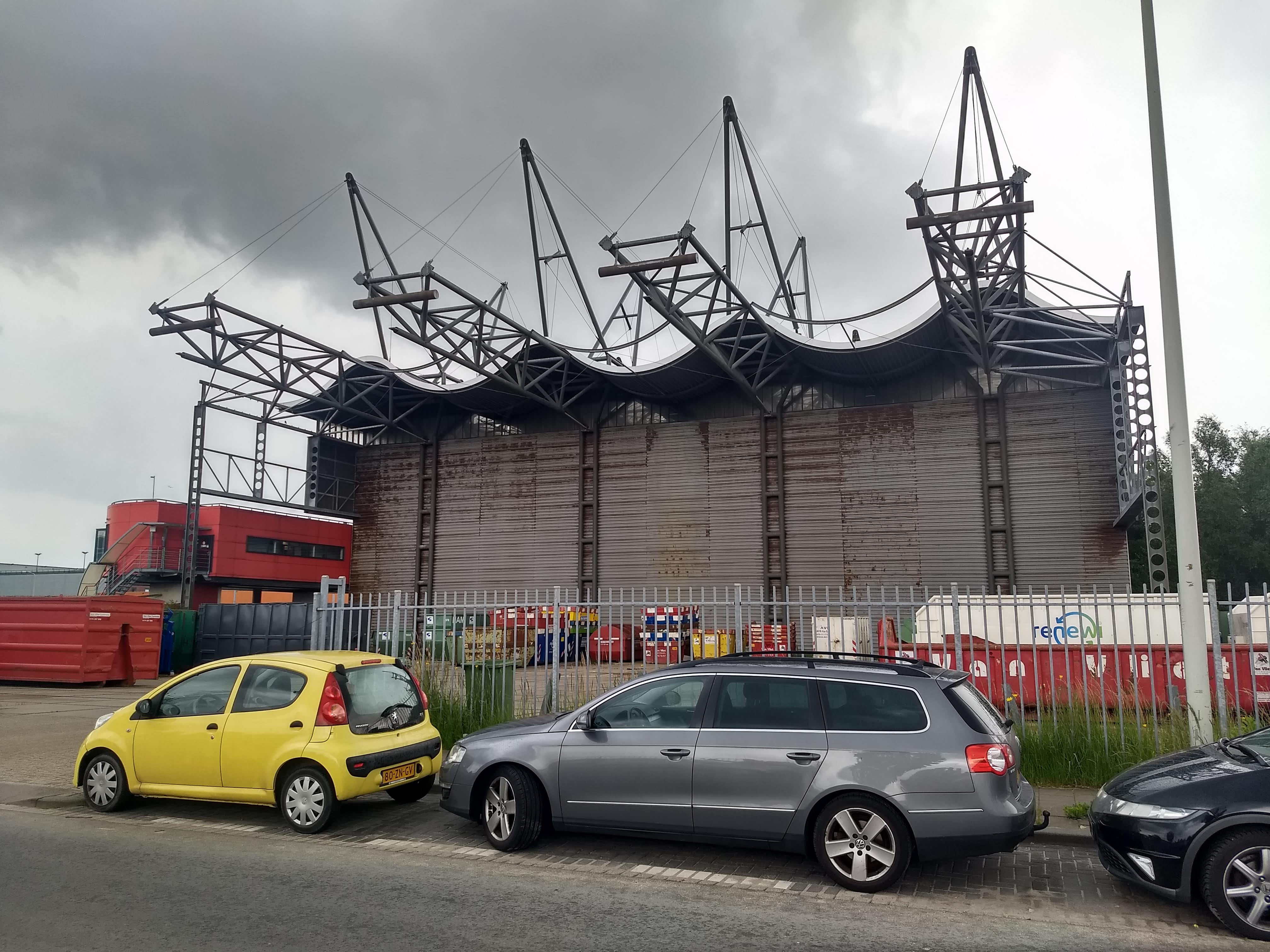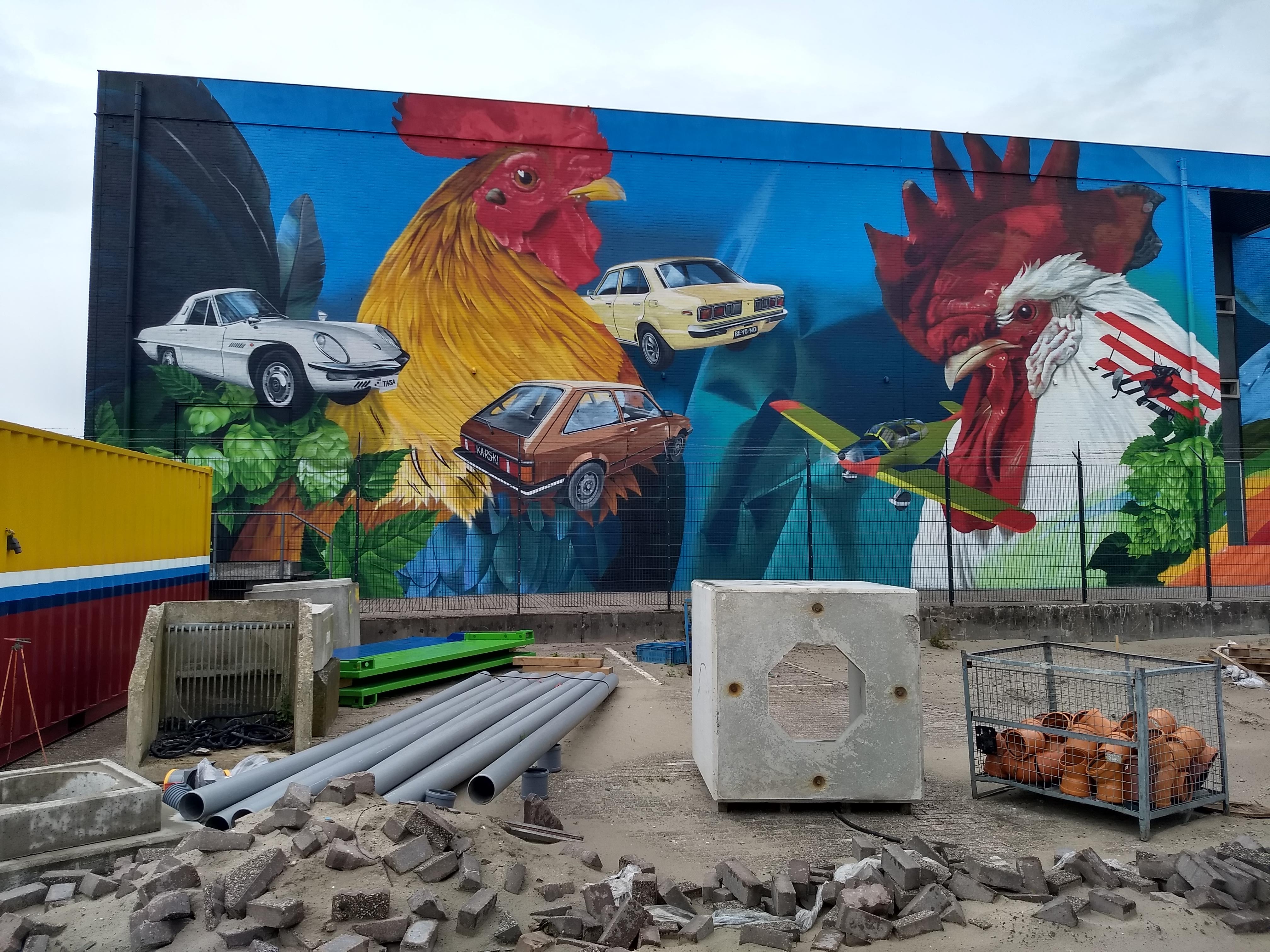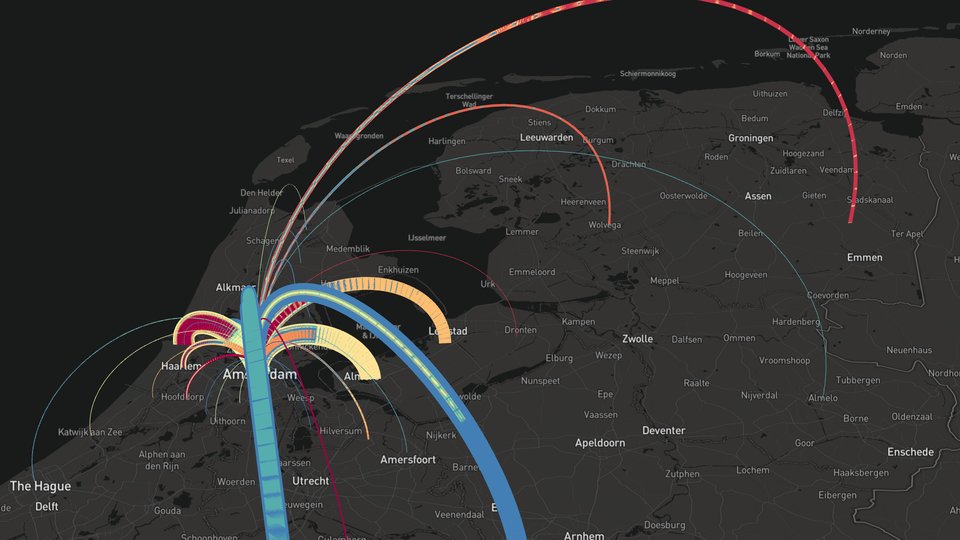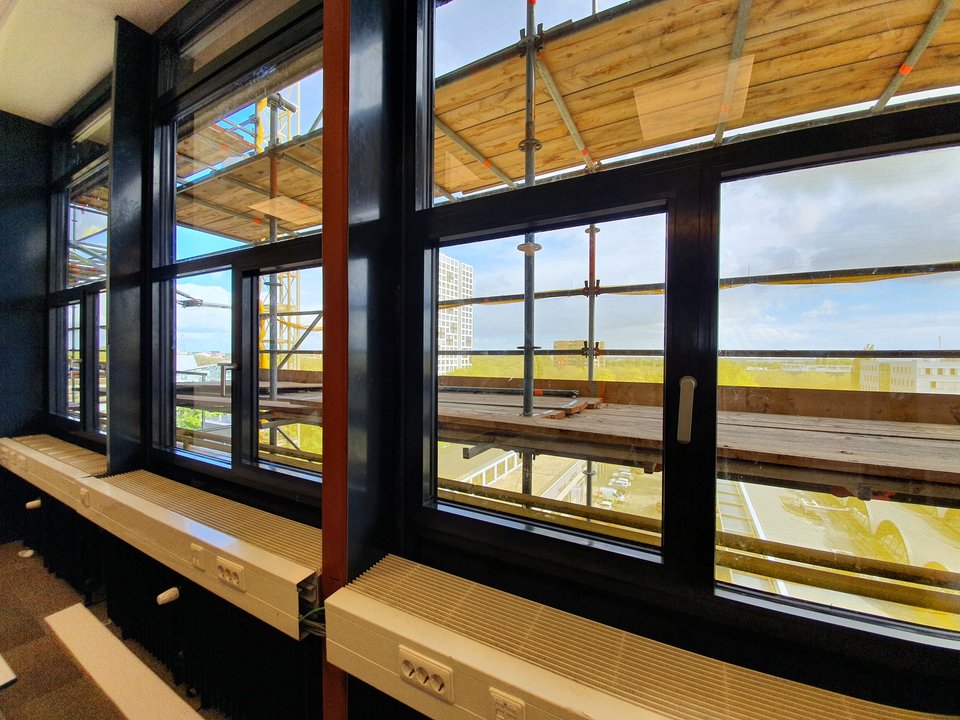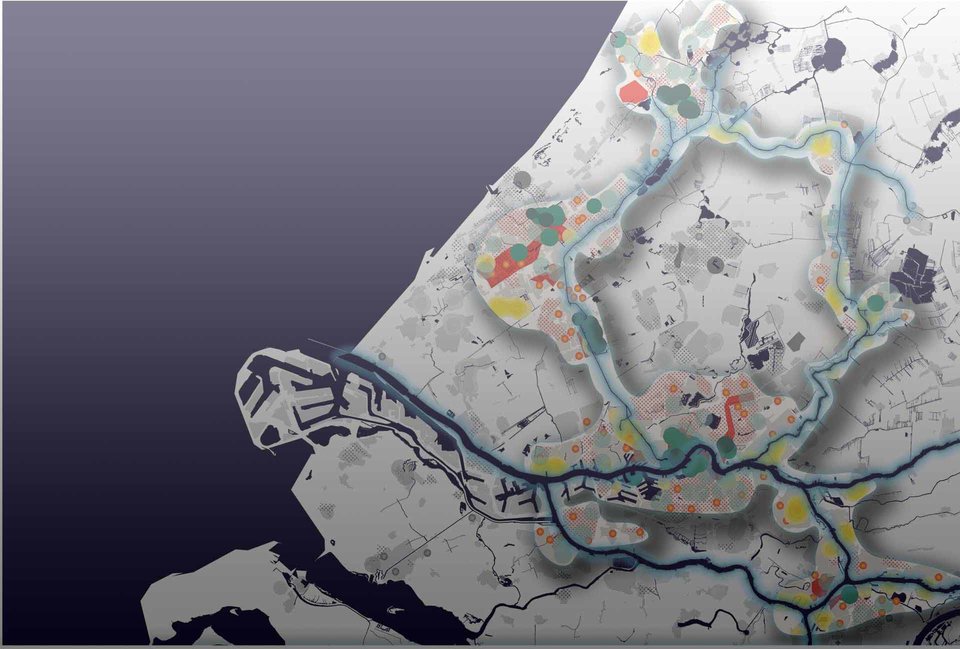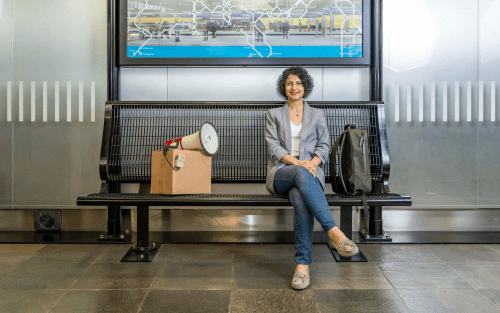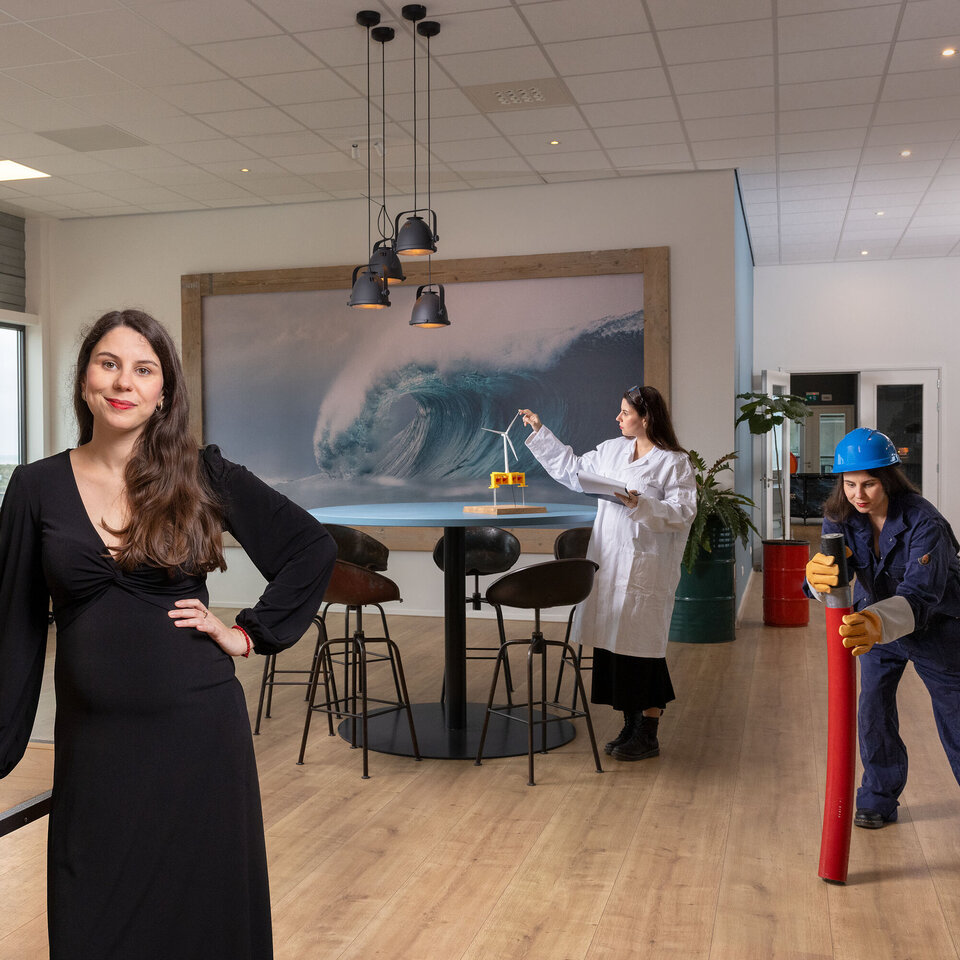“We are pioneering on a large scale. Political backing, local support, time and physical space are essential if a circular area development is to have any chance of success”, explains professor Ellen van Bueren. Within the Leiden-Delft-Erasmus Centre for Sustainability, she has been leading the research project ‘Circular area development Binckhorst – The Hague’. She collaborates with the province of Zuid-Holland, and regional businesses and universities to accelerate the circular economy. Her goal is to draw up a set of scientifically based do's and don'ts for a circular area development by the end of this year.
The cooperation takes place within the ACCEZ knowledge programme of the Province of South Holland. Cooperation between the various parties is essential for the necessary knowledge development. “On paper, the circular economy is a great model, but in practice there are many obstacles. We need to find solutions to these, because if we don't change how we use the available resources and our waste, it will be the end of life on our planet,” says Ellen van Bueren. As the construction sector is one of the main producers of waste, it is only logical to explore how a circular area development can be achieved. For the Binckhorst development area, the knowledge programme is working as integrally as possible; so the research team is located in the heart of the area, and we are involving as many local stakeholders as possible, from the Municipality of The Hague to large companies like BAM and the local entrepreneurs’ platform I’m Binck.
Traditional area development
Van Bueren feels that our approach to area development is currently far too traditional. “Areas are seen as empty fields asking to be filled with houses. This is also how land prices are determined. But it is more transparent to look at the capacity of an area. If you want to increase its self-sufficiency, you need to factor in such aspects as energy generation and waste processing.” Anke Rolsma from the Municipality of The Hague adds: “Many parties invested in land positions long ago, and now they are looking to see a return on their investment. This creates so much market pressure to develop the area that there is hardly any time to examine whether the plans are in fact future-proof.”
Closing flows and changing systems
However, The Hague has drawn up an ambitious circular economy plan. It is the first area development to follow this framework, in anticipation of the new Environment and Planning Act. Rolsma: “We have come up with innovative policy rules and so-called ‘area passports’ (which describe the integral ambitions and frameworks for the project). Unfortunately, the market parties and even the municipality itself are not yet used to thinking in this way, and it is sometimes complicated to work with.” A circular area development means that material, energy and water flows are closed, at a larger scale or on a smaller scale. “But it can be difficult to know at which level these loops can best be closed, as many of them go beyond the area in question, and some are even organised at global level. Moreover, we need to implement system changes, such as the energy and mobility transitions, to be able to close loops” says Van Bueren.
Various perspectives
As yet there is no guidebook for circular area development. And no-one has a clear picture of the consequences, be they environmental, financial or social. For this reason the research team is approaching the issue from various perspectives, involving as many parties in the area as possible. Van Bueren: “To start with it's a technical issue. We are examining the energy, water and waste flows in and out of the area, for example, to see how we can close them. At the same time, we are investigating what legislation, regulations and organisational forms are needed, and what business models are suitable, because if there was any pure financial profit in circular economy, it would have already been firmly embraced.” Finally, the team is mapping the spatial impact on the area, and the impact on its present and future residents. “For example, we can only serve a maximum number of houses if we want to use aquathermal energy (extracting heat from water, eds.),” explains Rolsma.
Concrete scenario’s
To get a better idea of the potential in the area, the research team is working out a number of scenarios, taking into account existing initiatives in the area which could be included. Rolsma: “We want to add as many homes and workplaces as possible, with a minimum of cars, and this has consequences for the design of the area. For example, large supermarkets are excluded in favour of small-scale supermarkets where people do their daily shopping by bike or on foot.” At the same time, there are already a number of inspirational initiatives present, such as a local baker who is reusing residual products from a small brewery. And what should we do about the waste collection depot in the middle of the Binckhorst? “The initial reflex is to move it elsewhere to make room for housing, but this doesn't do away with the problem. What I want to know is, what would be the advantages of keeping it?", says Van Bueren.
Making a difference
The research team will be working on site in the Binckhorst until the end of the year. So they have just under a year to disseminate and share the new knowledge on circular area development among all the stakeholders in the Binckhorst. To gain a clear picture of the conditions needed for a circular area development to flourish. To learn from the initiatives already present. And to give advice to new initiatives. In short, Van Bueren is leading an ambitious project. It remains to be seen whether the Binckhorst will actually become a circular area. The market is impatiently banging on the door. Rolsma: “We are sharing all the insights gained during the study with parties within and beyond the area, interactively wherever possible.” We are also looking at how the insights we have gained could be used in other areas. “And the embedding of the project in ACCEZ ensures that even after the project has ended, the lessons can continue to be actively disseminated and possibly even developed further”, concludes Van Bueren.

